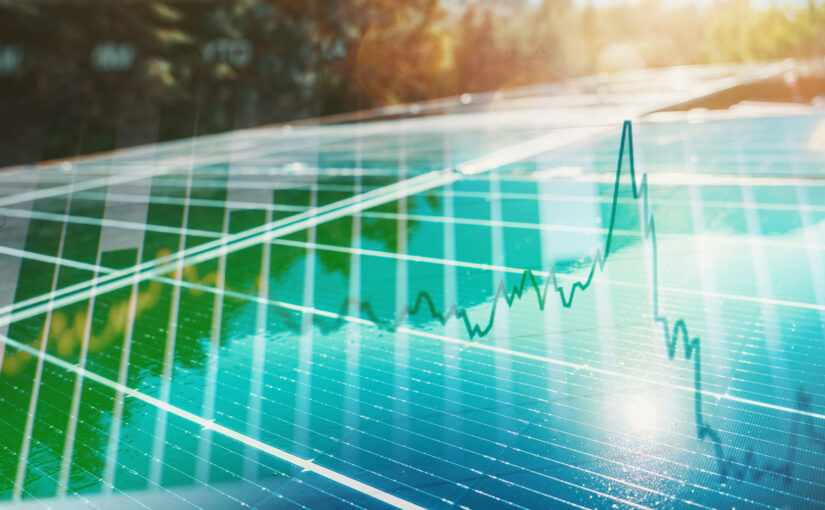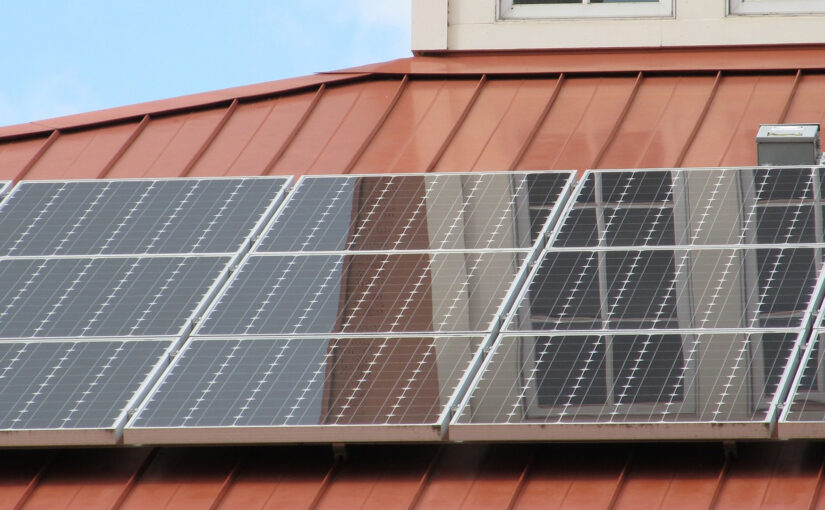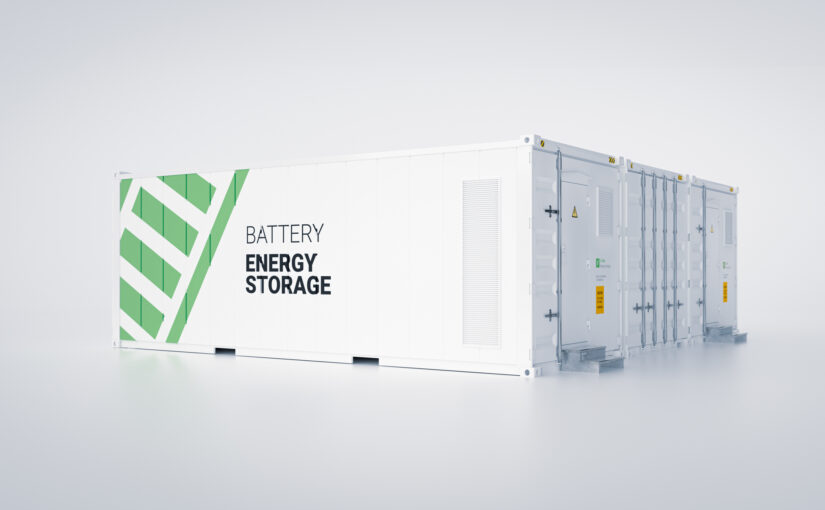Contracting and Funding Projects with DER-Asset Optimization

Securing funding and structuring a contract may be the hardest parts of developing new distributed energy resource (DER) projects.
Even with the Inflation Reduction Act set to catalyze billions of dollars of investment in renewable energy projects, financial viability – or the perceived lack thereof – has become a bigger barrier to deployment than technology. In a recent survey, microgrid developers ranked funding approval as the most challenging project stage, followed by project sizing and capturing upside monetization opportunities.
Getting DER projects greenlighted can be challenging because proformas often do not reflect the full value of the investment, or financiers discount project return projections because the tools utilized to estimate returns are not employed to realize value in live operations. Many times, DER owners and developers overlook opportunities to earn grid services revenue or reduce costs or do not realize projects can recognize both. Full visibility into a project’s value stack is essential to both funding and contracting DER projects.
Making DER Projects Pencil Financially
DERs are any assets that use, store, discharge, or generate electricity, like on-site generation, energy storage, electric vehicle chargers, solar panels, or load curtailment. Energy users are installing more DERs but only when they can make the projects pencil financially by connecting them to sufficient value.
Optimizing DERs involves choosing between all available value streams in each day or hour based on which would be most lucrative, and stream values can differ substantially depending on the details of the site and project. Successful DER projects justify investments by creating proformas that account for all possible revenue and savings based on the site and asset constraints and the available value opportunities.
If you are a DER owner/operator trying to fund a project, optimization starts at the proposal stage to enable an accurate view of all the on-bill and grid services value and ensure the asset is sized to optimize that value. Beginning at the proposal stage helps in sizing projects correctly and making even marginal projects pencil by considering all available value streams. Calculating the returns that a project would yield and demonstrating where they will come from and how they will be realized improves your chances of securing financing.
Getting Creative with Contracting Structures
In structuring your proposal and contracting structure for behind-the-meter projects, identifying the type of value and timing of realization of that value can be key to identifying creative contracting structures with the utility-account-holder. For example, monthly or annual lease payments from the utility-account-holder may be possible where on-bill value is the driving value source, or a split of grid service revenue may be a more reasonable approach where grid services are key to the project’s financial health. Identifying and executing on the ideal contract structures stems from a high degree of confidence in what sources of value will be realized post-contract.
Impacting Project Success
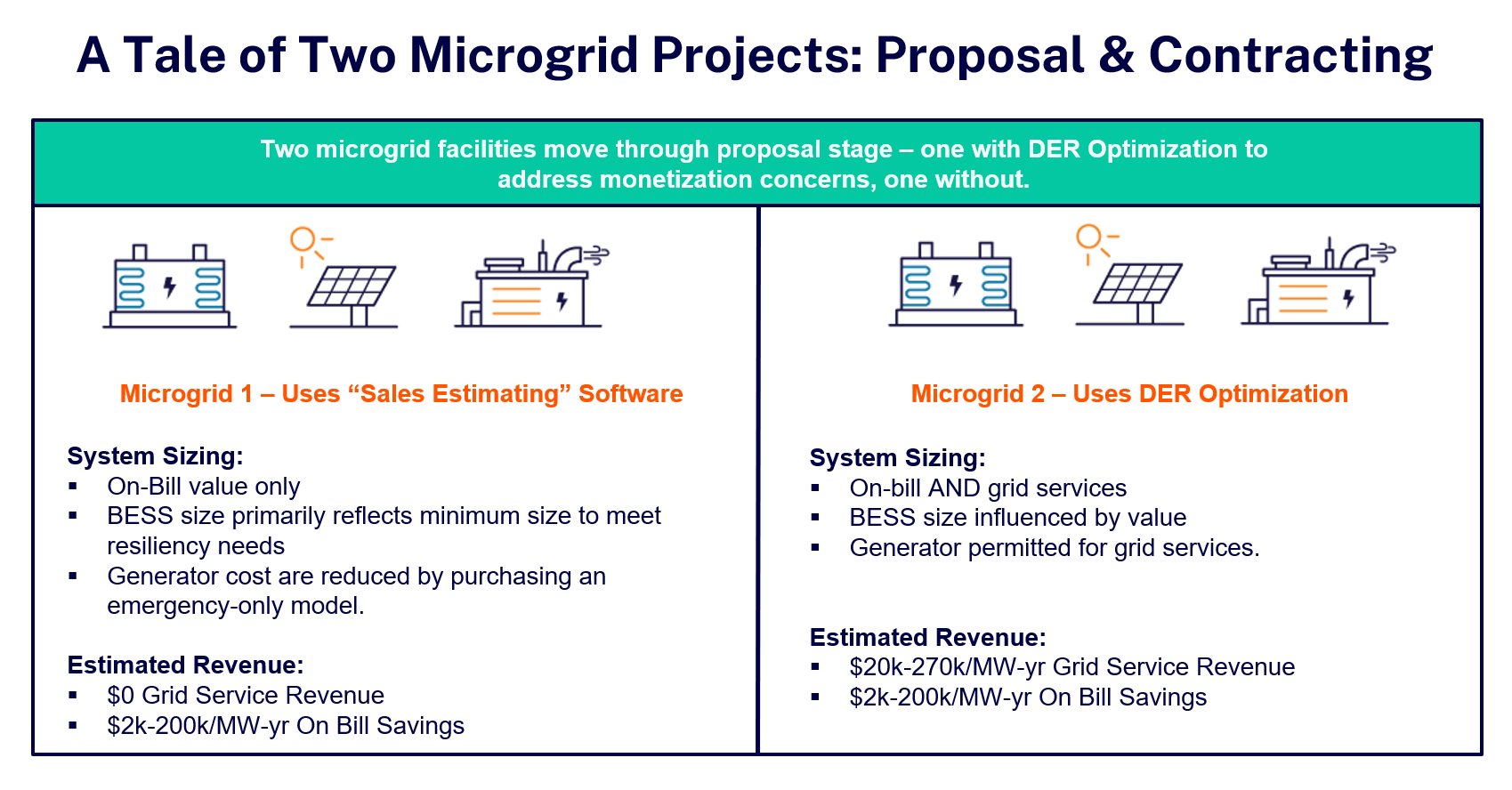
Overlooking opportunities at the outset can prevent a customer from accepting your proposal or limit the project’s eventual returns. Consider the returns from two DER projects in ISO New England (ISONE) as examples. One project used DER optimization but the other did not.
Project #1 (Not Optimized)
This customer developed a microgrid based on the energy user’s resiliency requirements and demand charge management expectations only. Although the project was approved and eventually met the customer’s requirements and expectations, it could have been more rewarding with a larger battery that would have provided incremental resiliency. The customer ultimately left money on the table because it did not consider the full stack of available value streams, and participation in other available programs such as ISONE capacity programs and Connected Solutions was suboptimal.
The participation of the generator was also limited by the lack of DER optimization. The customer invested in a generator that was permitted for emergency-use only and was specifically to address their resiliency requirements. With a DER optimization view and a full picture of all sources of potential value, the customer may have found that they could have contracted instead for a non-emergency-only generator and used that generator for both the resiliency requirements and to earn revenue by providing grid services. The revenue earned from grid services would have more than offset the added cost of a properly permitted non-emergency generator.
Project #2 (Optimized)
Conversely, another customer and benefited more from their project by considering all value streams and the full potential of DER optimization when designing, funding, and contracting their project. Beginning at the conceptual stage, they iterated on key aspects of the battery for a retrofit to a solar array in the PJM area.
Duration was one of the elements evaluated when modelling potential grid services values in PJM. After considering several duration iterations, the project developer decided that a one-hour battery would provide better returns than a multi-hour battery based on anticipated value streams, cost considerations, and warranty constraints. As a result of determining the right size for the battery upfront, the customer increased its projected return and is now set up to take advantage of all revenue streams.
Such potential to benefit from multiple revenue streams is always helpful given that the financiers of DER projects want as many revenue sources as possible. Diversification of project revenue sources and greater returns increase the chances of securing funding.
Securing funding for DER projects may be hard, but DER optimization makes it easier. Considering and pursuing all value streams from the beginning helps projects pencil and increases returns.
If you would like to learn more about why energy users and DER portfolio owners are turning to optimization solutions that evaluate site-specific performance data and energy market options to create project proformas that get projects greenlighted, watch our presentation from the 2023 Microgrid Knowledge conference: The Greatest Bang for Your Buck: Getting Projects Contracted and Funded with DER-Asset Optimization.
You can also call us at 844-276-9371 or visit CPowerEnergy.com/contact to find out how our EnerWise™ Site Optimization solution makes estimating and delivering the value of DER projects easier.
Rob Windle
As CPower’s Vice President, Strategy Planning & Business Development, Rob keeps a curious eye locked on the future. He leads the development and management of innovative solutions that support the proliferation and monetization of distributed energy resources (DERs) such as decentralized generation and energy storage. He has more than 20 years of experience in product development, direct and channel sales development, and management across the Energy, Enterprise Software, and Automation Controls industries. A Certified Energy Manager®, he holds a Bachelor of Science degree in industrial engineering from the University of Cincinnati and lives in Atlanta, Georgia.
Virtual Power Plants can cost-effectively support the grid—if we let them
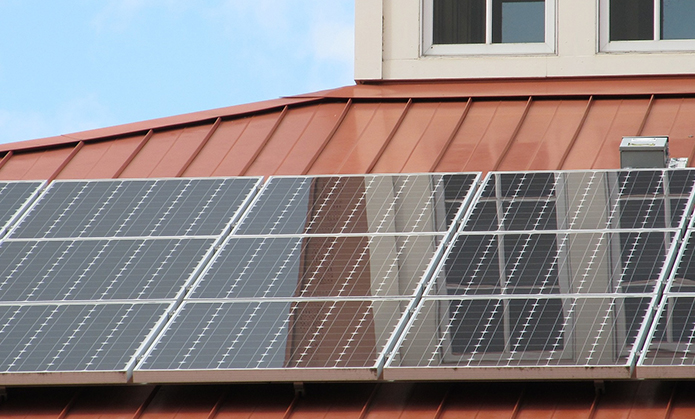
Credit: Renewable Energy World (A rooftop solar system)
*This article first appeared on Renewable Energy World on July 28, 2023. Click here to view.
Strained by the double burden of increased demand and more frequent extreme weather events, our grid struggles to provide reliable electricity in many areas of the country – and the challenge will only intensify in the years to come.
The related search for reliable expanded grid capacity has generated buzz about a relatively new term for a solution that has been around for some time: Virtual Power Plants (VPPs). These networks aggregate electricity from customer-owned distributed energy resources (DERs) such as batteries, building management systems, smart home devices, and electric vehicle chargers, then use these assets to help keep the grid balanced by reducing or shifting energy use.
While the term VPP is relatively new, large energy users have been called on to reduce power consumption during times of peak demand for decades. What’s new is the technology advancements enabling greater sophistication and automation, and the exponentially growing base of DERs that can be tapped to expand grid capacity without costly new plants or infrastructure projects. Anything connected to the grid that generates or consumes energy and can respond to a signal can efficiently support grid reliability through VPPs: rooftop solar, smart thermostats, smart water heaters, EV chargers, and more.
A growing body of research has shown that VPPs provide resource adequacy and environmental benefits at a significantly lower price point than other options, such as gas peaker plants and grid-scale battery storage. For instance, a recent Brattle Group study, “Real Reliability: The Value of Virtual Power,” found numerous economic and societal benefits from VPPs. Most notably, the study found that the net cost of VPPs is 40% lower than that of a gas peaker plant, and 60% less than a utility-scale battery storage system. According to the study, VPPs ultimately provide cost savings of $15 billion to $35 billion compared to the alternatives.
Meanwhile, customers enjoy an additional $20 billion in societal benefits over 10 years: faster grid connection, decreased greenhouse gas emissions, increased use of renewable energy, expanded grid capacity for electrification, and greater customer satisfaction. In fact, the study showed that VPPs were the only resource for which societal benefits exceeded cost.
While the benefits of VPPs may seem abstract to the average energy user, VPPs have a very real impact on maintaining energy reliability and customer well-being as extreme weather events become more frequent and severe. For example, a CPower VPP provided more than 50 GWh of load relief during Winter Storm Elliott last December, an amount of energy equivalent to the daily energy use of more than 1.7 million homes, helping grid operators to prevent further blackouts as they managed the impacts of unplanned natural gas generation failures.
VPPs are ready to conquer grid capacity and resiliency challenges faster, more sustainably, and more cost-effectively than ever before – but only if our regulatory frameworks let them.
In many areas, VPP adoption has been hindered by power market regulations that preceded the rise of VPP-compatible technologies. Updating these regulations and resolving questions about how to adequately value these resources and incorporate them into regulatory frameworks would allow customers to play a more active role in cost-effectively managing and optimizing the use of energy resources for greater energy resilience.
What we need now is for regulators and stakeholders to work together on policy, regulatory, and market-based solutions to accelerate the large-scale adoption of VPPs. Regulators can consider modifications to market participation rules that recognize the capacity benefits that VPPs provide to the grid.
One step could be to make it easier for customers to share their data, needed to estimate earnings, monitor performance and finalize payments, with VPP providers. Other solutions include easing aggregation limitations and widening eligibility requirements to reflect the wider spectrum of grid-connected assets available today and updating pricing structures and compensation mechanisms to adequately incentivize VPPs for both DER-owning customers and utilities. Such collaboration between regulators, stakeholders, and customers is the key to achieving a more distributed, flexible, cost-effective, and resilient energy grid.
As the demands of electrification and extreme weather strain the grid, we don’t have to wait to build capacity: we already have the technology and resources to deploy 60 GW of VPPs by 2030, which would meet future resource adequacy needs. VPPs are already helping utilities power through months of heat waves and increased demand—and they could do much more. Regulators can unlock the full potential of VPPs to reduce costs and greenhouse gas emissions while ensuring grid stability when we need it most.
Mathew Sachs is Senior Vice President of Strategic Planning and Business Development at CPower Energy, a national DER monetization and Virtual Power Plant provider.
Mike Smith: Q&A with CPower’s New CEO

New CPower CEO Mike Smith may have backed into the energy industry, but he has since helped move it forward. In his more than 25 years in the sector, he has developed a reputation for driving growth and delivering innovation at some of energy’s leading companies.
Now at the helm of the nation’s largest provider of distributed energy resource (DER) monetization opportunities and virtual power plants, Smith is set to guide CPower, its customers and the grid into the future.
“I am thrilled to be joining the team at CPower, a company whose work is essential in ensuring a successful and reliable new energy economy,” Smith stated when CPower announced that he would be CEO following the retirement of previous CEO John Horton.
“The company has a strong foundation and is well-positioned to capitalize on the tremendous opportunities in the rapidly evolving distributed energy space,” Smith continued.
Most recently the CEO of solar and battery storage developer ForeFront Power, Smith discussed his career as a DER and utility leader, his vision of the industry’s future and his expectations for how CPower and its customers will help enable the transition in an interview with The Current.
The Current: How did you get into the energy industry? And why?
Smith: I got into the energy industry very much by accident. I was practicing law in a law firm in Columbus, Ohio, minding my own business as a trial lawyer, and I was in this period of career growth that I call improv. What I mean by improv is that the answer to every question is, “Yes.”
A partner came up to me one day and said, “We’ve got this new client and they’re in a dispute over natural gas trading in the state of West Virginia. Two of their employees are being deposed in this dispute and they need a lawyer to sit with them during the deposition. Would you do it?” And I said, “Sure. Why not?”
It turns out the client was a then little-known company from Houston called Enron. The two guys who were in this dispute weren’t accused of anything, but they needed to be deposed. So, I sat with them in their depositions.
Then Enron, which had a small office in Columbus, decided they wanted to have permanent counsel in the area, and as part of that wanted to have a lawyer be seconded to their Ohio office to learn natural gas trading. Once again, the law firm came to me and said, “Do you want to work with this natural gas trading company called Enron to learn how to do natural gas contracts?” And, again, I said, “Sure. Why not?” So, I ended up working for Enron as a secondment.
The Current: How has the industry evolved during your career?
Smith: In some ways, it hasn’t changed at all. What I mean by that is, yes, we brought in retail choice, and I saw that happen. But the physicality of the electric grid hasn’t changed a bit. We still make most of our electrons in large central-station power generation and put them into a copper wire and sell those electrons to end-use customers.
What we’re seeing now though, is that the physicality is changing. More and more customers are generating more of their energy instead of buying it from the grid. Also, more and more customers are seeking to reduce energy consumption through energy efficiency programs and many more customers are installing energy storage. So, we’re seeing monumental change in the physicality of the grid and how customers interact with the grid, which I think is what’s exciting about what we’re doing here at CPower.
The Current: What attracted you to the role of CEO at CPower?
Smith: We’ve got a whole industry that’s doing things like building on-site solar generation, building on-site storage and doing other DER projects. That’s all going to continue to happen. CPower sits at this unique position in between those end-use customers that have responsive assets, whether they be load, generation or storage, and the grid, which needs access to those responsive assets. We provide a unique and valuable service sitting in the middle. That’s what attracted me to CPower—being at the number one player, with the best team, in the most exciting piece of the energy industry.
The Current: What do you see as some of the most exciting innovations happening in the energy industry to meet the changing needs and demands of customers and the grid?
Smith: The deployment of energy storage is a big piece of that continued penetration of on-site generation assets, particularly solar but also fuel cells. Again, it’s this theme of more and more customers taking control of their energy production and consumption. This is the most exciting thing. Then, of course, we can use CPower to optimize those assets and provide essential grid reliability services in times when the grids are going to be continually more and more stressed with extreme weather events.
The Current: What does the future of the grid look like?
Smith: It’s going to be an evolution. We’re going to continue to have central-station generation, which will be a combination of nuclear and some kind of fossil fleet, including natural gas, and grid-connected renewables. But more and more, the grid will continue to be decentralized and more resources pushed to the edges of the grid in terms of customer-site generation and storage. That trend will continue for the foreseeable future.
The Current: What role will energy users play in the future?
Smith: Energy users will continue to become a much larger part of the equation as they have opportunities to install on-site generation and storage. We also can’t forget about the fact that the fueling of vehicular fleets will move more to the customer as more and more of our customers electrify the fleets that they own. Customers who shop at their places of business or work at their places of business will be seeking to charge their EVs as well. That’s a whole new piece of the infrastructure puzzle that adds demand and that flexibility needs to be well-managed to have a well-functioning grid.
Also, customers who are controlling their energy costs or are on a sustainability journey are becoming more sensitive to what they’re paying and the source of the energy they’re using. That’s driving a lot of the things that CPower can get involved in both in terms of not just responsive load assets, but also optimizing on-site generation and storage.
The Current: What are your biggest priorities for CPower?
Smith: First and foremost, our focus on the customer is a core company value, and that won’t change. CPower will also continue to do the great things we’ve done to bring the company to where it is now. That is to protect, preserve and expand our legacy capacity demand response business where we can, and then build additional flexibility programs that allow us to provide more DER or asset optimization services for more customers nationwide.
The Current: What else do you want customers to know about you and CPower?
Smith: Customers need to know that we can give them valuable ways to monetize their assets. Every customer that has a building has a load asset that has value. We can help them determine that value and extract that value from the market. And, if you add on to that on-site generation assets or storage assets, that provides even more untapped opportunity for these customers.
To learn more about DER monetization and how CPower can help you monetize your energy assets while supporting sustainability, improving grid reliability and increasing energy resiliency, call us at 844-276-9371 or visit CPowerEnergy.com/contact.
Mike Smith
Mike Smith is a visionary and innovative leader who brings more than 25 years leadership experience in the energy industry to CPower as its CEO. Mike joined CPower from ForeFront Power, where he was the CEO of the company’s North American solar and energy storage business, responsible for strategy and all business areas across the U.S. and Mexico.
Prior, Mike served as Senior Vice President, Distributed Energy, at Constellation, the retail energy subsidiary of Exelon Corp., where he was responsible for Constellation’s distributed solar, energy efficiency, and energy asset operations businesses across the U.S. He also served as Vice President, Innovation and Strategy Development, for Exelon Generation, and led Constellation Technology Ventures, Exelon’s venture investing organization. Earlier, Mike was Vice President and Assistant General Counsel for Enron Energy Services and a trial lawyer at Bricker & Eckler, LLP.
Industry Leaders CPower and Foreman Unveil Groundbreaking Partnership to Maximize Mining Operations and Boost Demand Response Revenue
CPower Applauds DTE Energy for Including Innovative Demand Response Procurement Mechanisms in Integrated Resource Plan
CPower Wins Environment + Energy Leader 2023 Product of the Year Award for EnerWise® Site Optimization
Michael D. Smith Named as CPower’s Chief Executive Officer as John Horton Announces His Retirement
Norfolk State University Partners with CPower to Support Grid Reliability Across Virginia
Connecticut’s Energy Storage Solutions Program Helps C&I Customers
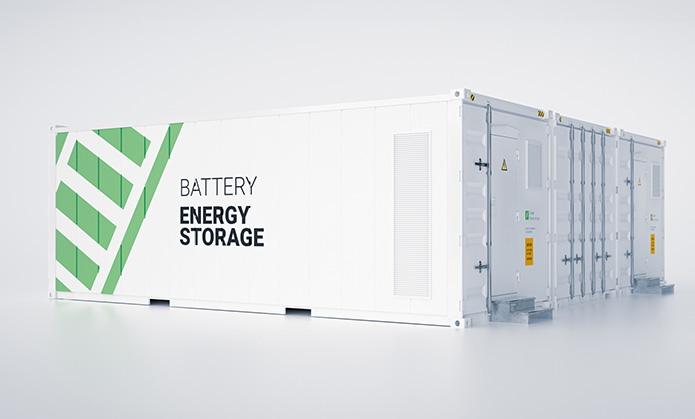
Connecticut is at the forefront of the energy storage movement and CPower leads the way in helping customers deploy more batteries.
The state recently recognized CPower as an early adopter of energy storage solutions by giving the company a Green Bank Award. CPower was one of the first Eligible Contractors to submit a storage project to Energy Storage Solutions, which offers incentives to reduce the cost of energy storage systems. The program is overseen by the Public Utilities Regulatory Authority (PURA), is paid for by electric ratepayers, and is administered by the Green Bank, Eversource and United Illuminating.
CPower was awarded almost 40 MW of battery systems for the first tranche of the program, in which a total of 50 MW was awarded. The company has also submitted additional projects for the next stage of the program to help the state meet its energy storage goals.
The second tranche of awards will include up to 100 MW in projects and is accepting applications today. Recognizing the benefits that energy storage has provided for customers and the state, CPower supports efforts to accelerate the awarding of incentives in the next stage of the Energy Storage Solutions program so that batteries spread across Connecticut faster.
Incentives in New England states such as Connecticut help organizations reach their sustainability goals while improving facility resiliency and decreasing operations, maintenance and energy expenses. For example, Connecticut’s Energy Storage Solutions program offers organizations upfront incentives for installed battery capacity plus performance-based incentives for dispatching the battery capacity to the grid. In doing so, the statewide battery program fosters a more reliable and resilient electric distribution system, especially for vulnerable communities.
Commercial and industrial building owners can save money through the Energy Solutions Program by using batteries to reduce peak demand management charges. Incentives for C&I building owners include:
-
- Upfront incentives that reduce up to 50% of the battery’s cost in exchange for allowing the battery to reduce electrical grid stress on hot summer days for 10 years.
- Performance incentives paid twice a year for 10 years based on the average power the battery contributes to the grid during critical periods.
- Additional incentives for eligible small businesses, critical facilities, customers replacing fossil fuel generators and customers in outage-prone Grid Edge areas.
As an example, a healthcare facility in Connecticut projected $186,000 in on-bill savings in the first year after installing a battery through CPower. Importantly, these on-bill savings are in addition to the performance incentives paid by utilities and grid operators.
CPower has the largest dollar amount of C&I projects in the Energy Storage Solutions queue in Connecticut. It also leads all contractors in C&I projects underway. All told, CPower has more than 100 MW of C&I battery projects in the design phase across New England.
CPower provides OnDemand Energy Storage solutions for customers in Connecticut, Rhode Island and Massachusetts. In working with CPower as an energy-storage-as-a-service (ESaaS) provider, New England facilities can reap energy storage benefits such as on-bill savings and grid services revenue without the upfront costs or responsibilities of ownership.
CPower will design, install and operate a battery on an organization’s behalf — and cover all upfront costs, thereby allowing C&I customers to avoid the interconnection engineering, capital investment and O&M responsibilities associated with a battery project.
Energy Storage Solutions projects done by CPower provide customers in Connecticut with a path to more affordable, resilient and greener energy.
To learn more about CPower’s energy storage services, call us at 844-276-9371 or visit CPowerEnergy.com/contact.
Philip Ciulla
As Account Executive for New England for CPower, customers and team members alike look to Phil as a knowledgeable and trusted partner. For Phil, the feeling is definitely mutual. Born and raised in California, Phil now lives in New England.



